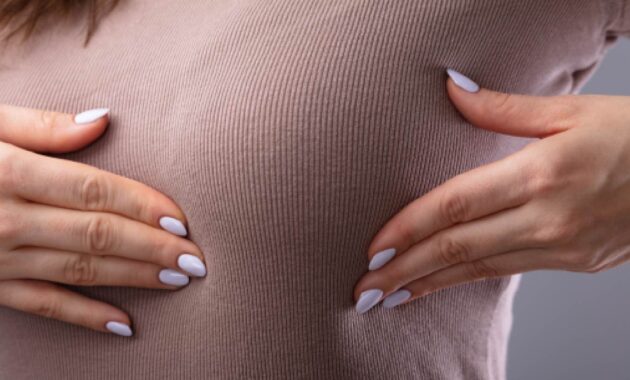When we think of concerns around breast health, it is breast cancer that generally tops the list. That comes as no surprise as breast cancer is one disease that caused 6,85,000 deaths globally in 2020, as per the World Health Organization. But you should know that there are several other breast diseases and conditions that can affect this vital part of a woman’s body. Understanding breast conditions is essential for every woman’s well-being.
To know more about breast diseases or conditions, Health Shots reached out to Dr Sajjan Rajpurohit, Senior Director, Oncology, BLK-Max Super Speciality Hospital, Delhi.

Breast diseases that are not cancer
We might feel pain or notice lumps on our breasts but that doesn’t mean that you have breast cancer. Symptoms could be an indication of another breast-related condition. Here are some of the breast diseases:
1. Fibrocystic breast disease
Fibrocystic breast disease is a common condition that is characterised by the formation of lumps or cysts in the breasts, says Dr Rajpurohit. These lumps can be tender and might fluctuate in size throughout the menstrual cycle. While this condition is not cancerous, it can cause discomfort and pain.
2. Mastitis
Mastitis refers to an infection that occurs within the breast tissue, and new moms should be more careful as it generally happens during breastfeeding. It often causes redness, swelling, warmth and pain in the affected area. It can be caused by bacteria that might enter through cracked nipples or from milk duct blockages.
3. Benign breast tumors
Benign breast tumors develop within the breast tissue and are non-cancerous growths. They come in various types such as fibroadenomas or papillomas. The expert says that these tumors are usually harmless, but should still be evaluated by a doctor.
4. Ductal carcinoma in situ
It is an early stage of breast cancer where abnormal cells are found inside one or more milk ducts, but have not spread beyond them and into the surrounding tissues. It’s considered a non-invasive form of breast cancer, but still requires proper monitoring and treatment to prevent progression.
Select Topics of your interest and let us customize your feed.
PERSONALISE NOW
5. Breast abscess
It is a painful collection of pus that forms within the breast tissue due to bacterial infection. It is commonly associated with lactation or nipple piercing complications. You might have swelling and may experience fever.
6. Galactorrhea
This condition involves abnormal production of breast milk that has got nothing to do with pregnancy or breastfeeding. It can be caused by certain medications, hormonal imbalances, thyroid problems or tumors affecting hormone-producing glands, says the expert.

What increases the risk of breast diseases?
As women grow older, their risk of developing breast diseases or disorders or conditions tends to increase. This is because, the breast tissue becomes less dense and more susceptible to changes and abnormalities with age. Then there is family history, so if you have a close relative such as a mother or sister who has had breast cancer or other breast conditions, your chances of developing them might be higher. Lifestyle choices such as obesity and excessive alcohol consumption can also increase the likelihood of developing breast diseases or disorders, says Dr Rajpurohit.
Best is to go for regular self-examinations and mammograms for early detection and prompt treatment regardless of the risk factors. While there are medications, surgeries and therapies, making healthy lifestyle choices can also help to reduce the risk and severity of many breast diseases or disorders. So, the key is to maintain a balanced diet, engage in regular physical activity, avoid excessive alcohol consumption, not smoke and practise proper breastfeeding techniques.
#Breast #diseases #cancer
